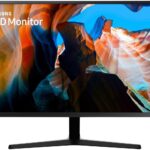Introduction
When it comes to gaming, choosing the right monitor can be a big decision. Two popular features that many gamers think about are 1440p resolution and 144Hz refresh rate. You might wonder, “What’s the difference, and which one should I choose?” This article will help you understand these terms and how they relate to your gaming style. We’ll explore the benefits of each option and provide guidance based on your gaming habits and the hardware you have. This article is written by an expert in the field and has been fact-checked to ensure the information is accurate.
1. Understanding Refresh Rates and Resolutions
1.1. What is Refresh Rate?
Refresh rate is a term that describes how many times a monitor can update the image on the screen every second. It is measured in Hertz (Hz). For example:
- A monitor with a 60Hz refresh rate updates the image 60 times a second.
- A monitor with a 144Hz refresh rate updates the image 144 times a second.
Why does this matter? A higher refresh rate means smoother gameplay. If you are playing fast-paced games, like first-person shooters, a 144Hz monitor can make a huge difference. You’ll see images on the screen more clearly, and your movements will feel more fluid. This can give you an edge over your opponents in competitive gaming.
1.2. What is Resolution?
Resolution refers to the number of pixels that make up the image on your screen. More pixels generally mean a clearer picture. Here are some common resolutions:
- 1080p (1920 x 1080 pixels)
- 1440p (2560 x 1440 pixels)
- 4K (3840 x 2160 pixels)
The higher the resolution, the more detail you can see in the game. For example, 1440p has more pixels than 1080p, which means the image can be sharper and more detailed. Pixel density (measured in pixels per inch or PPI) is also important because it affects how clear the image looks, especially on larger screens.
2. Evaluating Your Gaming Style
2.1. Competitive vs. Graphically Intensive Games
Your gaming style plays a big role in deciding between 144Hz and 1440p.
- Competitive games, like Counter-Strike: Global Offensive or Overwatch, require quick reflexes and fast movements. In these games, a 144Hz monitor can provide a smoother experience, allowing you to react faster to what’s happening on the screen.
- Graphically intensive games, such as The Witcher 3 or Cyberpunk 2077, focus more on stunning visuals and details. Here, a 1440p resolution can enhance your experience, allowing you to see beautiful graphics and intricate details in the game world.
2.2. Importance of Frame Rates
Frame rate is how many images your graphics card can produce in one second, and it’s measured in frames per second (FPS). A high frame rate is essential for a smooth gaming experience. If your monitor has a 144Hz refresh rate, it can display up to 144 FPS. This means that if your computer can produce 144 FPS or higher, you will enjoy the benefits of a higher refresh rate.
If your monitor can’t keep up with the frame rate, it can lead to issues like screen tearing, where the image looks broken. Therefore, it’s important to have a monitor that matches or exceeds your gaming performance.
3. Exploring the Options
3.1. 144Hz: The Choice for Competitive Gamers
For competitive gamers, a 144Hz monitor can be a game-changer. Here are some advantages:
- Greater smoothness: Fast action looks smoother, making it easier to track moving targets.
- Reduced input lag: Your actions can be displayed on the screen faster, giving you a competitive edge.
3.2. 1440p: Enhanced Visual Experience
If you love stunning graphics and want to immerse yourself in the game world, 1440p resolution may be the better choice for you. Here’s why:
- Higher pixel density: On larger screens, the image remains sharp and clear, allowing you to see fine details.
- Better for single-player experiences: If you enjoy story-driven games, the visual quality can enhance your experience.
3.3. The Rise of 1440p 144Hz Monitors
Today, many monitors offer both 1440p resolution and 144Hz refresh rate. This means you can enjoy the best of both worlds! Here’s what to consider:
- Price points: 1440p 144Hz monitors are often more expensive than standard 144Hz or 1440p monitors alone, but they can provide excellent value if you want smooth gameplay and stunning visuals.
4. Advanced Refresh Rates: 240Hz and Beyond
4.1. Understanding 240Hz and 360Hz
Just when you thought 144Hz was the best, monitors with 240Hz and even 360Hz have entered the market! Here’s what you need to know:
- 240Hz monitors provide even smoother gameplay compared to 144Hz. They can be great for serious competitive gamers who want every advantage.
- 360Hz monitors are even faster but are usually aimed at eSports professionals and very high-end gaming setups.
4.2. The Cost-Benefit Analysis of High Refresh Rate Monitors
While higher refresh rates sound great, they come with a price tag. Here are some factors to consider:
- Cost: Higher refresh rate monitors are generally more expensive. You should weigh whether the benefits justify the cost for your gaming needs.
- Hardware requirements: To get the most out of a high refresh rate monitor, you’ll need a powerful graphics card. Make sure your gaming rig can handle it!
5. Adapting to Ultra High Definition and Ultrawide Monitors
5.1. 4K Gaming
4K gaming offers stunning visuals, but it comes with challenges:
- Performance demands: Running games at 4K requires a very powerful graphics card. If your hardware isn’t up to the task, you may not get the smooth gameplay you want.
- Comparison with 1440p: While 4K has much higher resolution, many gamers find that 1440p offers a better balance between visuals and performance.
5.2. Ultrawide Resolutions
Ultrawide monitors provide an immersive gaming experience by offering a wider field of view. Here are some things to consider:
- Benefits: Ultrawide monitors can enhance gameplay by making you feel more like you’re in the game.
- Performance considerations: Running games at ultrawide resolutions (like 3440×1440) can be demanding on your system.
6. Price Considerations and System Requirements
6.1. Cost of Monitors
Here’s a general idea of monitor prices:
- 1080p monitors can range from $100 to $300.
- 1440p monitors usually start around $250 and can go up to $600 or more, especially for 144Hz versions.
- 4K monitors typically start around $400 and can go much higher, especially for gaming-focused models.
6.2. Ensuring Your PC Can Handle Your Choice
Before you buy, make sure your PC can handle the monitor you choose. Here are some tips:
- Check GPU benchmarks: Look up how well your graphics card performs at 1440p or 4K.
- Assess compatibility: Make sure your GPU has the necessary ports and can support the refresh rates you want.
Conclusion
In summary, the choice between 1440p and 144Hz depends on your personal gaming style and the hardware you have. If you’re into competitive gaming, a 144Hz monitor might give you the edge you need. If you love stunning graphics in single-player games, 1440p could provide the immersive experience you crave.
Ultimately, it’s important to consider your budget and system capabilities before making a decision. Explore the best options available in the market, and choose the one that fits your gaming lifestyle.
Other Related Articles
- Eizo Foris FS2331 Review
- How Much Power Does a 144Hz Monitor Use? A Deep Dive into Energy Consumption
- Should I Turn On HDR for Gaming? A Comprehensive Guide
- Is iPhone 16 Pro OLED the Best Display Yet?
- Understanding Panel Variance: What It Means for Your Monitor Purchase
- Can You Throw Computer Monitors in the Trash? The Ultimate Guide to Eco-Friendly Disposal
- Understanding VESA ClearMR: The Future of Motion Clarity in Displays
- 4K vs 1080p – Is UHD Worth The Upgrade?
- How To Choose The Right Gaming Monitor: A Comprehensive Guide
- IPS vs OLED Monitors for Color Accuracy: The Ultimate Showdown
- HDMI 2.1: The Future of Home Entertainment and Gaming
- How to Connect Heart Rate Monitor to PC?
- Curved vs Flat TV – Which Should You Choose? The Ultimate Showdown for 2025
- Can You Connect M-Audio Monitors to PC?
- Why Is My PC Showing the Same Display on Two Monitors?
- Why Are Computer Monitors More Expensive Than TVs?
- The Best Flicker-Free Monitors for Eye Care
- Monitors for Mac vs Windows PCs: The Ultimate Showdown
- 1920×1080 vs 2560×1440 – Which One Should I Choose?
- 99219444 Toshiba and Its Revolutionary Features for Tomorrow’s Tech Landscape
- OLED vs QD-OLED: The Showdown of Display Technologies
- What Is DisplayPort 2.1?
- What Is The Best Monitor Size For Gaming?
- 720p vs 1080p vs 1440p vs 4K vs 8K – Which Should I Choose?
- Is An HDR Gaming Monitor Worth It?
- Mini-LED vs MicroLED: What’s the Difference?
- Do Pawn Shops Take Computer Monitors?
- What LG Computer Monitor is as Good as the C3?
- Understanding Pixel Walk and Pixel Inversion
- Curved vs Flat Monitors for Work: Which One is Right for You?
- What Is The Soap Opera Effect?
- 4K vs 1440p Monitors for Video Editing: Which One Should You Choose?
- Do I Have to Attach a Hood to My BenQ Monitor?
- Can You Use Mac as a Monitor for PC?
- What Is G-SYNC And What Does It Do?
- Daz Studios Summoner G8 for the Visionary Artist
- Dell vs HP Monitors for Gaming
- Understanding IPS Technology: A Comprehensive Guide
- 27-Inch Monitors vs 32-Inch Monitors for Productivity
- Understanding Screen Resolution: Why It Matters for Your Displays
- How to Transport Computer Monitors?
- How to Dispose of Computer Monitors?
- What Is 4K Resolution And Is It Worth It?
- How to Pack Computer Monitor for Moving?
- What Is HDR For TVs And Is It Worth It?
- 1440p or 144Hz – Which Is Best For You?
- USB Type-C Explained – Everything You Need To Know
- Samsung’s Exciting Journey into Glasses-Free 3D Displays at Gamescom 2024
- I Have A Problem with My Samsung Odyssey G3 Monitor Setup
- Is A 144Hz Monitor Worth It? A Comprehensive Guide
- Understanding FALD Blooming and the Halo Effect: A Deep Dive
- What Does 144Hz Mean? Understanding Refresh Rates in Simple Terms
- Is an UltraWide Monitor the Right Choice for You?
- Active vs Passive 3D – What’s The Difference?
- Understanding Glare Control in Luminaires for Computer Users
- Why Does My Acer Monitor Keep Going Black?
- Understanding Motion Blur Reduction: A Gamer’s Guide
- How to Connect Studio Monitors to PC?
- Misleading Monitor Specifications You Should Look Out For
- QLED vs OLED – Which Is Best?
- Understanding VESA AdaptiveSync and MediaSync: The Future of Display Technology




